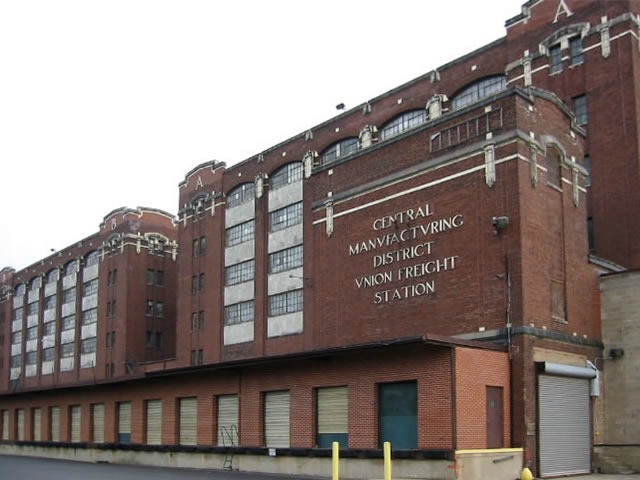New Proposal Could Breathe Fresh Life Into Central Manufacturing District
By Stephen Gossett in News on Jul 8, 2016 6:17PM

Flickr / Photo: Payton Chung
The mammoth Central Manufacturing District that towers along Pershing Road, just west of Ashland Avenue, in McKinley Park, has gone from innovative manufacturing nucleus to glorified city-owned storage closet over its 100-plus-year lifespan. But a new proposal, released on Thursday and announced in the Tribune, argues in favor of another potentially major makeover: a grand-scaled, green-modeled food manufacturing center.
Real estate brokers (and barometers of "cool") Cushman & Wakefield have been shopping the property to potential suitors on behalf of the city since early last year. But no takers have emerged for the monumental row of six-story buildings. Designated an endangered landmark in 2014, the CMD seemed to endure more for its architectural draw than its utility. (A recent photo essay, published in The Chicago Dispatch, captures the modernist splendor.)
Now, the Center for Neighborhood Technology has stepped forth with an appropriately grand ambition: a "vertical, green, and urban industrial park" and food manufacturing outpost, with a network of related firms. So-called EcoDistricts—which integrate energy, transportation, water, and land use—would drive everything from bakeries to soybean processing to technical support for area growers.
"CMD is obviously a big project," Stephen Perkins, communications director at CNT, told Chicagoist. "It takes a big, compelling vision—which has been lacking. Something that makes companies and tenants be more productive, create more jobs, be more profitable than they would be elsewhere."
Perkins is convinced food manufacturing makes the most sense. "Food is a huge opportunity. There's a lot of growth potential there. So many places are just not structured to take advantage," he said.
The proposal targets several key desirabilities found in the CMD: location, five miles from both the South Loop and West Loop, in the heart of a major, diverse metropolitan market; large vacant spaces, which could facilitate supply chains and shipping models; proximity to transportation, including a potential—if far-off—revival of the land's railroad capabilities; secure construction; and perhaps best of all, the area's history of manufacturing, which the proposal claims "minimizes NIMBY problems." Well said.
"The marketplace for the last 20 years has seen an exodus of manufacturing jobs and the number of facilities like CMD shrink. We don't want to lose another resource," Perkins said.
The plan is not without challenges, CNT admits. Remodeling costs could be high, and the large size itself could be a hindrance. (Study participants noted the still-vacant fire magnet known as the Old Main Chicago Post Office.) Fears of gentrification were voiced but ultimately overcome: "Industrial redevelopment, as envisaged here, does not generally lead to gentrification, and could in fact help stabilize the neighborhood’s historic role as a home for manufacturing workers," the study concluded. A lack of manufacturing development, in fact, could leave the door open for condo development and gentrification.
It appears to be a legitimate point. "While I would welcome a rebirth of manufacturing to the area, the highest and best use is residential,"Al Klairmont, president of Imperial Realty, told the Tribune.
The CNT plan calls for a competition that would unite potential developers with the city. Perkins mentioned the possibility of a public exhibition of ideas, as the city has done in the past. Right now that's all still far down the road. But at least an interesting seed has been planted.